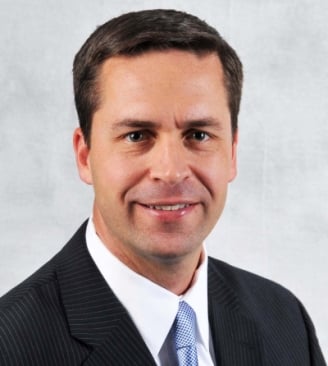As the Russell 2000 Index inches ever closer to its July 2007 peak of 855, small-cap portfolio manager Eric Cinnamond is protecting his absolute return strategy with a whopping 35% allocation to cash.
“In order to out-perform over the long-term you have to look stupid in certain periods,” he said. “It's in periods like these that managers tend to panic and do things just for performance, but you just need the mentality that there will be other opportunities.”
Mr. Cinnamond recently joined River Road Asset Management, a $4 billion firm, to manage the Aston/River Road Independent Value Fund Ticker:(ARIVX), which was launched in December.
Mr. Cinnamond has been working with this particular absolute return strategy since 1998, however. That's when he began managing a similar separate account portfolio for Intrepid Capital Management.
That strategy morphed into a mutual fund in 2005, Intrepid Small Cap Fund Ticker:(ICMAX), which Mr. Cinnamond co-managed until he left the firm to join River Road last year.
While a lot of money managers talk about absolute return strategies, Mr. Cinnamond refuses to even consider falling short of the objective of gaining between 10% and 15% on every security he buys.
This means that it is sometimes more prudent to lock in a gain and sell a stock if the risk of a decline it too high.
The logic, he explained, is that when stocks get expensive the potential for additional upside can become too risky.
“Where I fish it has gotten more difficult, but I don't have to stress about it,” he said. “The risk premium is tight right now, so if I can't get a 10% to 15% return, then cash is better.”
He acknowledges that the strategy “is not your typical small-cap fund,” pointing out the flexibility to go up to 100% in cash, with a “soft limit” of 40%.
Knowing when and where to invest is based on discount cash flow analysis and growth projection formulas that help him determine whether a stock is capable of at least a 10% annualized return.
A few of the 30 stocks currently in the portfolio include supermarket chain Weis Markets Inc. Ticker:(WMK), disposable intravenous connector maker ICUI Medical Inc. Ticker:(ICUI), and electronic payment processing firm Total System Services Inc. Ticker:(TSS).
One key to the analysis, he explained, is evaluating cash flow over multiple market cycles.
“In order to normalize it, I'm looking at cash flow during peaks and troughs of market cycles,” he said. “And I'm looking for a cash flow growth rate of 3% to 5%.”
Mr. Cinnamond said the focus on multi-cycle cash flow analysis helped him avoid expensive technology stocks in 1999, and he was out of banks for most of the period between 2004 and 2008.
He also avoided energy in 2008, but loaded up on energy sector stocks last year.
“During certain periods I may not own certain sectors,” he said. “And in a period like right now, after small-caps have rebounded tremendously from their March 2009 lows, it's back to patient mode.”
Mr. Cinnamond is prohibited from using the performance of the Intrepid portfolios in a manner that could be interpreted as marketing his current portfolio, but the Intrepid track record does support the absolute return objective.
Over the period from 1998 through 2010, when Mr. Cinnamond was managing money at Intrepid, the portfolio generated a 12% annualized return.
The return from the equity exposure in the portfolio generated a 15.6% annualized return.
While the practice of allocating large portions of the portfolio to cash can be a drag on performance, Mr. Cinnamond pointed out that an even bigger drag would be to stay invested in stocks that are declining in value.
“This is not market timing, it's security selection,” he said. “It's buying only when I can generate that 10% to 15% absolute return, and it's all based on each individual idea.”
Portfolio Manager Perspectives are regular interviews with some of the most respected and influential fund managers in the investment industry. For more information, please visit InvestmentNews.com/pmperspectives.







